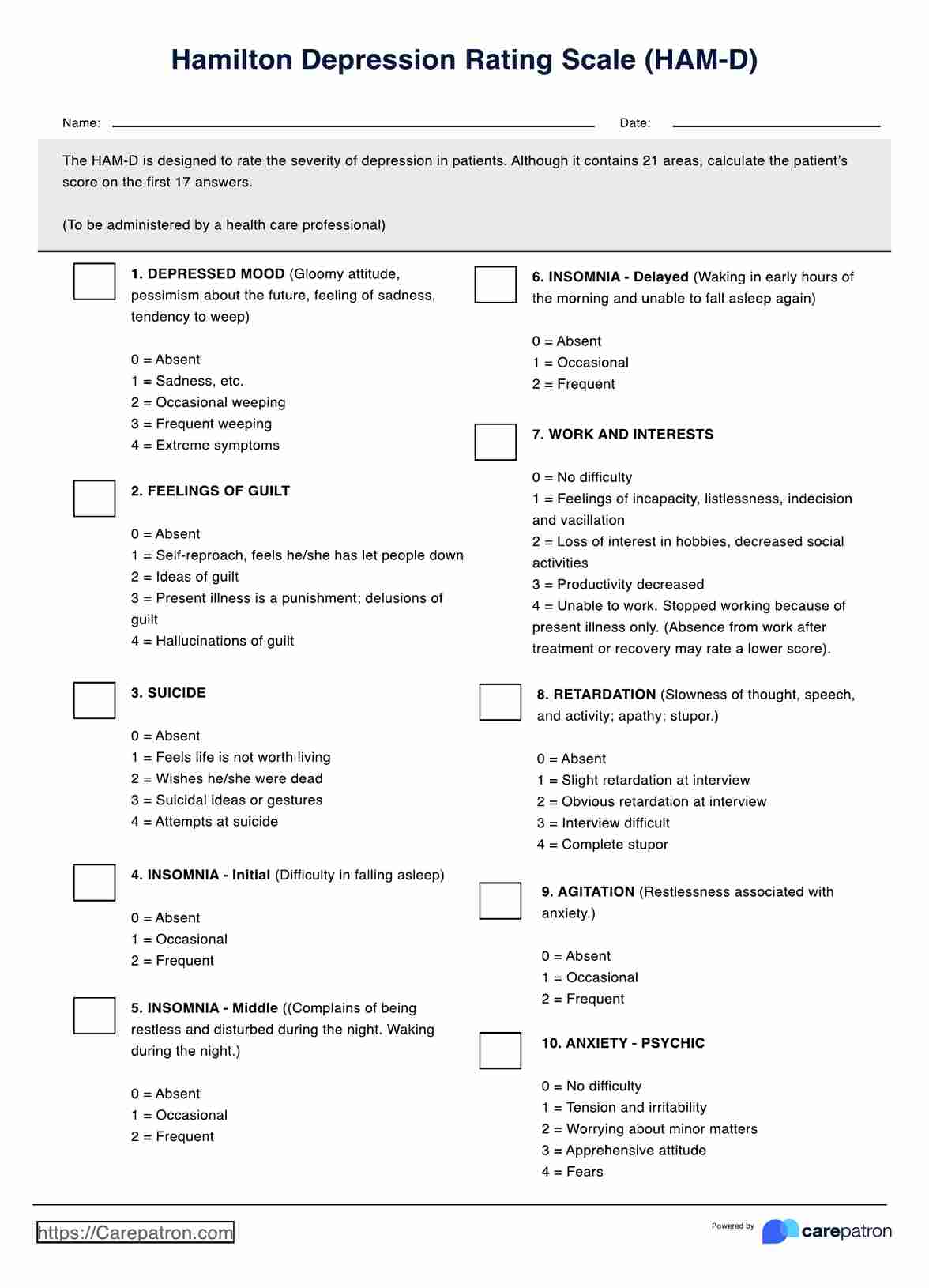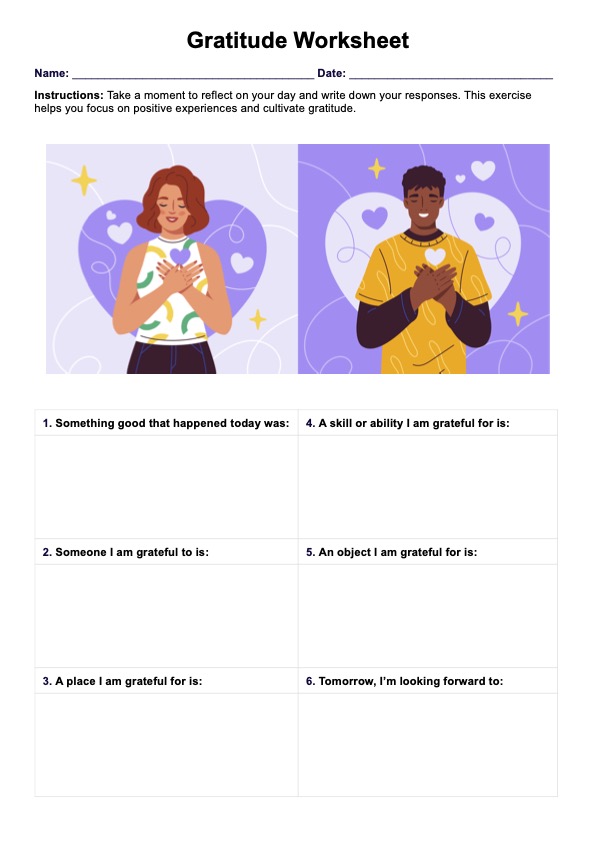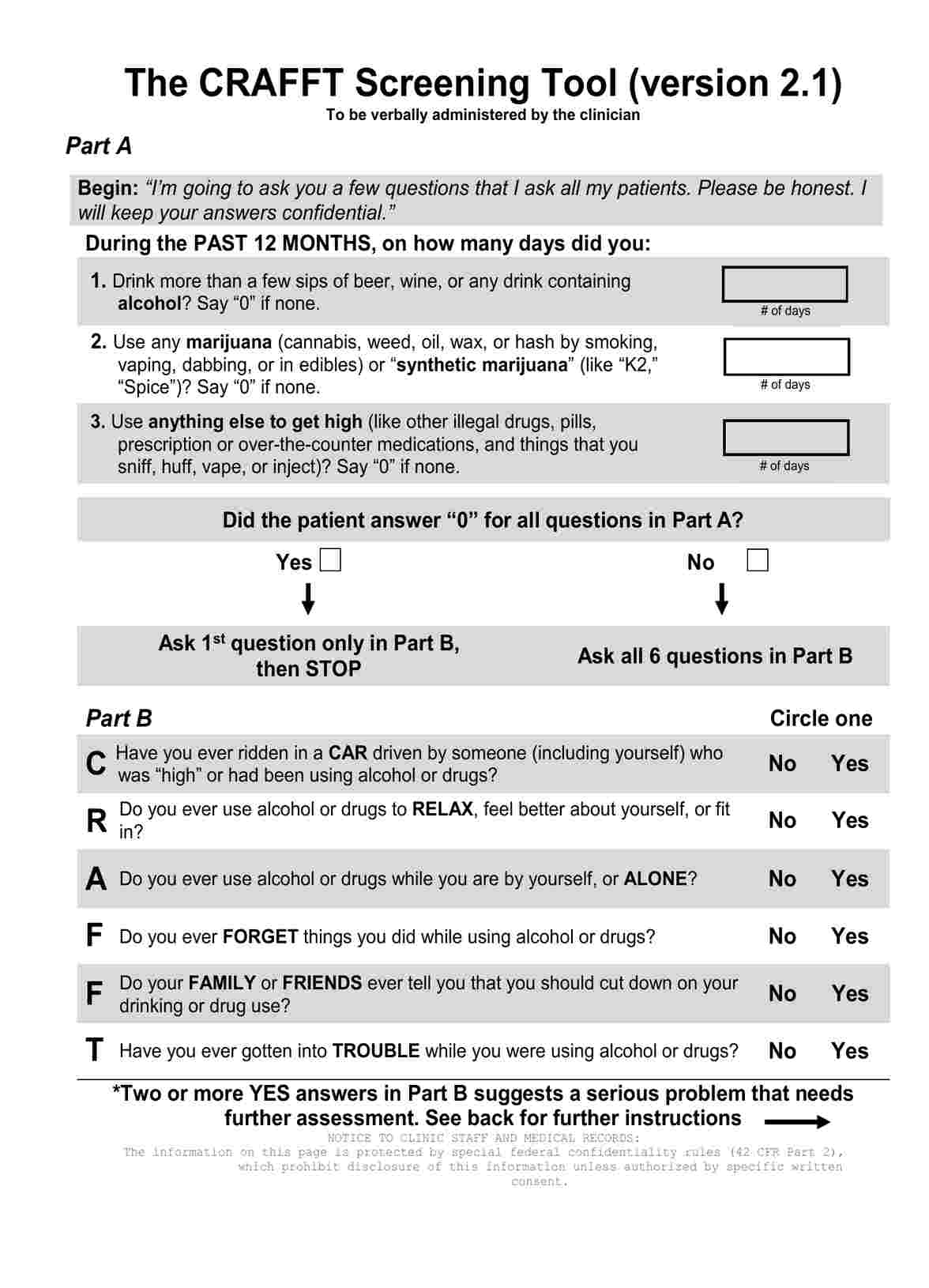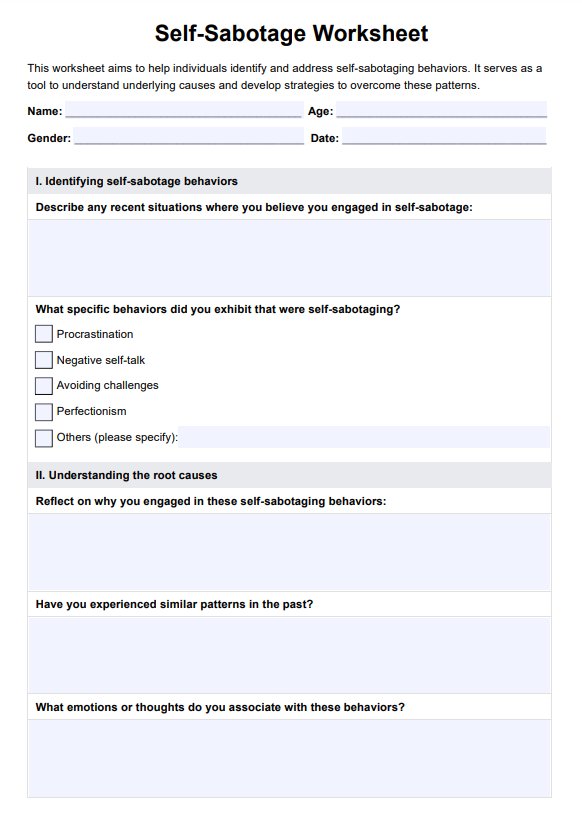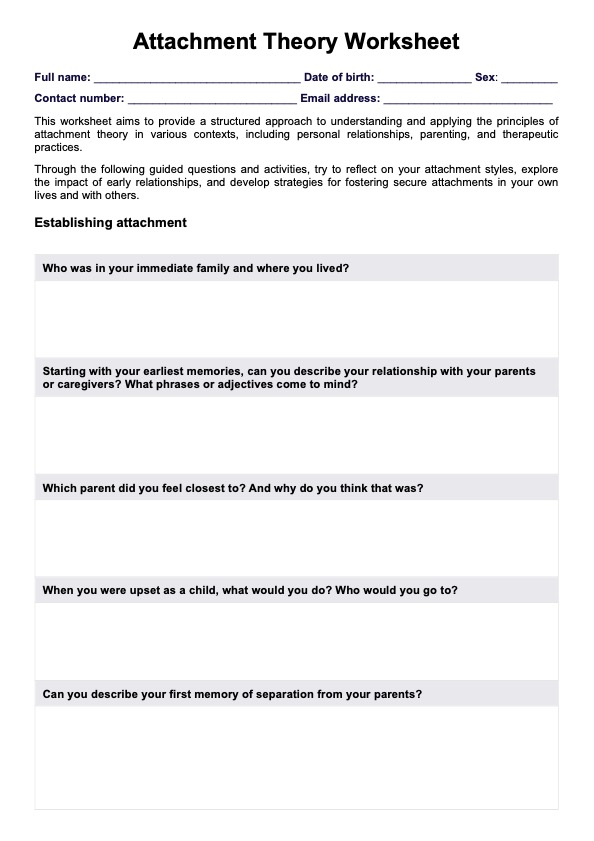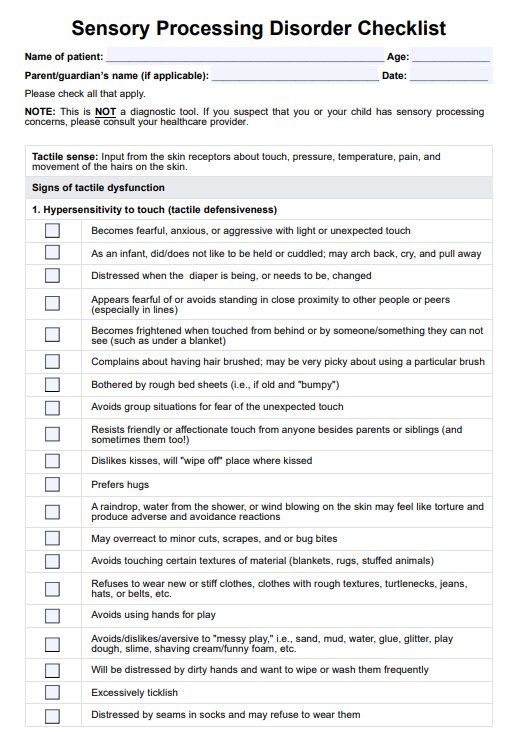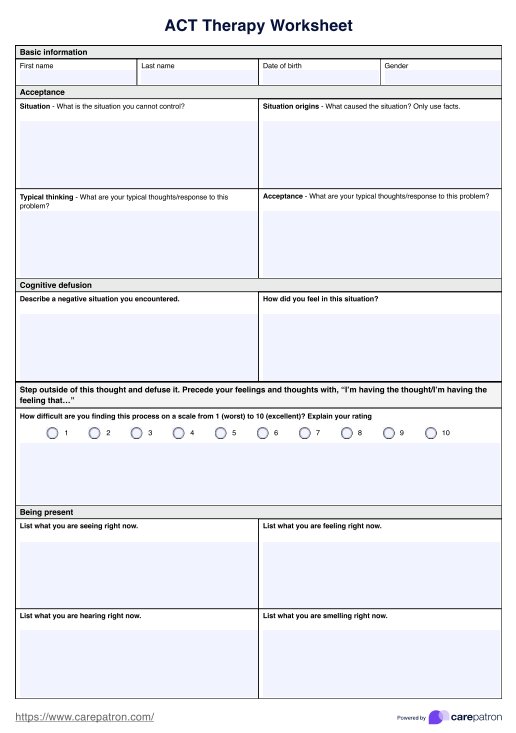Rate Your Self-esteem PTSD Worksheet
Help your client identify characteristics that can help their self-esteem with the Rate Your Self-esteem PTSD Worksheet.


What is Trauma and PTSD?
Trauma is any experience that deeply affects an individual and compromises their ability to cope effectively. Natural disasters, violence, abuse, or accidents could be traumatic. It’s worth noting that witnessing such events could also be equally traumatic.
It’s possible for people who experienced or witnessed traumatic events to develop Post-Traumatic Stress Disorder (PTSD). The symptoms of PTSD may include nightmares, hyperarousal, intrusive thoughts, and negative changes in thinking patterns.
All of these symptoms can significantly impact an individual’s daily function and remain beyond the actual occurrence of the trauma.
PTSD can result from various factors such as lack of social support, brain chemistry imbalances, prior exposure to traumatic events, and genetics, which may vary from one person to another, even when the traumatic experience is shared.
Treatment for PTSD is available and usually involves a combination of medication and therapies, such as cognitive-behavioral therapy (CBT) and Eye Movement Desensitization and Reprocessing (EMDR). These therapies are designed to manage symptoms, enhance the processing of traumatic experiences, and develop coping strategies.
Rate Your Self-esteem PTSD Worksheet Template
Rate Your Self-esteem PTSD Worksheet Example
How to use the Rate Your Self-esteem PTSD Worksheet:
Step One. Access and Download the Template
Access and download a printable and digital version of the “Rate Your Self-esteem PTSD Worksheet” by doing either of the following:
- Clicking “Download Template” and “Use Template” button
- Searching “Rate Your Self-esteem PTSD Worksheet” in Carepatron’s template library’s search bar on the website or app
Step Two. Fill Out the Template
After you give your client a copy, allow them to rank their self-esteem characteristics and answer the questions at their own pace. If they feel stuck or have questions, you may explain the template to them or use the sample template provided below.
Step Three. Discuss the Template
When they’re finished, discuss the template with your client to better understand their condition or formulate the next steps they can take to improve their self-esteem.
Step Four. Securely Store the Template
After the session, you or the client must store the completed worksheet in a secure physical location. For easy access for the client when they need it or you for reference, store it on Carepatron, a HIPAA-compliant clinical documentation software. Store your records on Carepatron, and you’re assured that only relevant parties can access the “Rate Your Self-Esteem” template when needed.
You can also use this PTSD worksheet template to provide clients with a clear and organized way to document their experiences and progress. It aids in tracking symptoms and planning effective interventions.
When would you use this Rate Your Self-esteem PTSD Worksheet?
Licensed and experienced mental health professionals like psychologists, psychiatrists, therapists, and counselors, can use the “Rate Your Self-esteem PTSD Worksheet” during the following session types:
- Initial Assessment: Mentioned mental health professionals can ask the client to answer the worksheet during their first session when the referring physician is getting to know the client. The information obtained can be used as a baseline for the client’s self-perception.
- Regular Check-Ins: The referring physician must constantly check their client’s self-esteem, especially during a treatment plan, to see its effectiveness. If the patient is uncomfortable answering open-ended or conversational questions, the referring physician may use the worksheet instead.
- Before and After Interventions: The worksheet may be used before and after interventions to see if the therapeutic approach is effective.
- Goal-Setting: It’s normal to set therapeutic goals. If the referring physician wants to set goals related to the client’s self-esteem, they may use this template as a guide and track progress.
What are the benefits of using this Rate Your Self-esteem PTSD Worksheet?
Improved Self-Awareness
The “Rate Your Self-Esteem PTSD Worksheet” will ask clients to rate their personality characteristics. For the answers to be as accurate as possible, the client must be self-aware of which ones they don’t have, which ones they’ve fully developed, and others that may contribute to their self-esteem.
Empowering and Positive Habit Forming
In the last part of the worksheet, the client will be asked to evaluate which characteristics they think are important for their self-esteem, which ones they wish they had more of, and brainstorm ideas on developing characteristics they want to have. Having a guide to follow can empower some clients, and working on said plans consequently trains the client to form positive habits beneficial to their self-esteem.
Track Progress
The referring physician can ask the client to answer the worksheet as often as needed. But it’s most effective when they ask the patient to ask the client to answer it before and after an intervention or routinely (e.g., monthly) to track the progress and check the effectiveness of the therapeutic approach.
Digitally Accessible
The free “Rate Your Self-esteem PTSD Worksheet” is digitally accessible, editable, and fillable on Carepatron and any PDF editor on any gadget you have on hand.
Commonly asked questions
It can take at least 30 minutes for a client to complete the Rate Your Self-esteem PTSD worksheet.
It’s best used during the initial assessment, before and after an intervention.
Mental health practitioners specializing in CBT sessions or caring for PTSD clients, like licensed and experienced psychologists, psychiatrists, counselors, and therapists, can use the “Rate Your Self-esteem PTSD Worksheet” template.


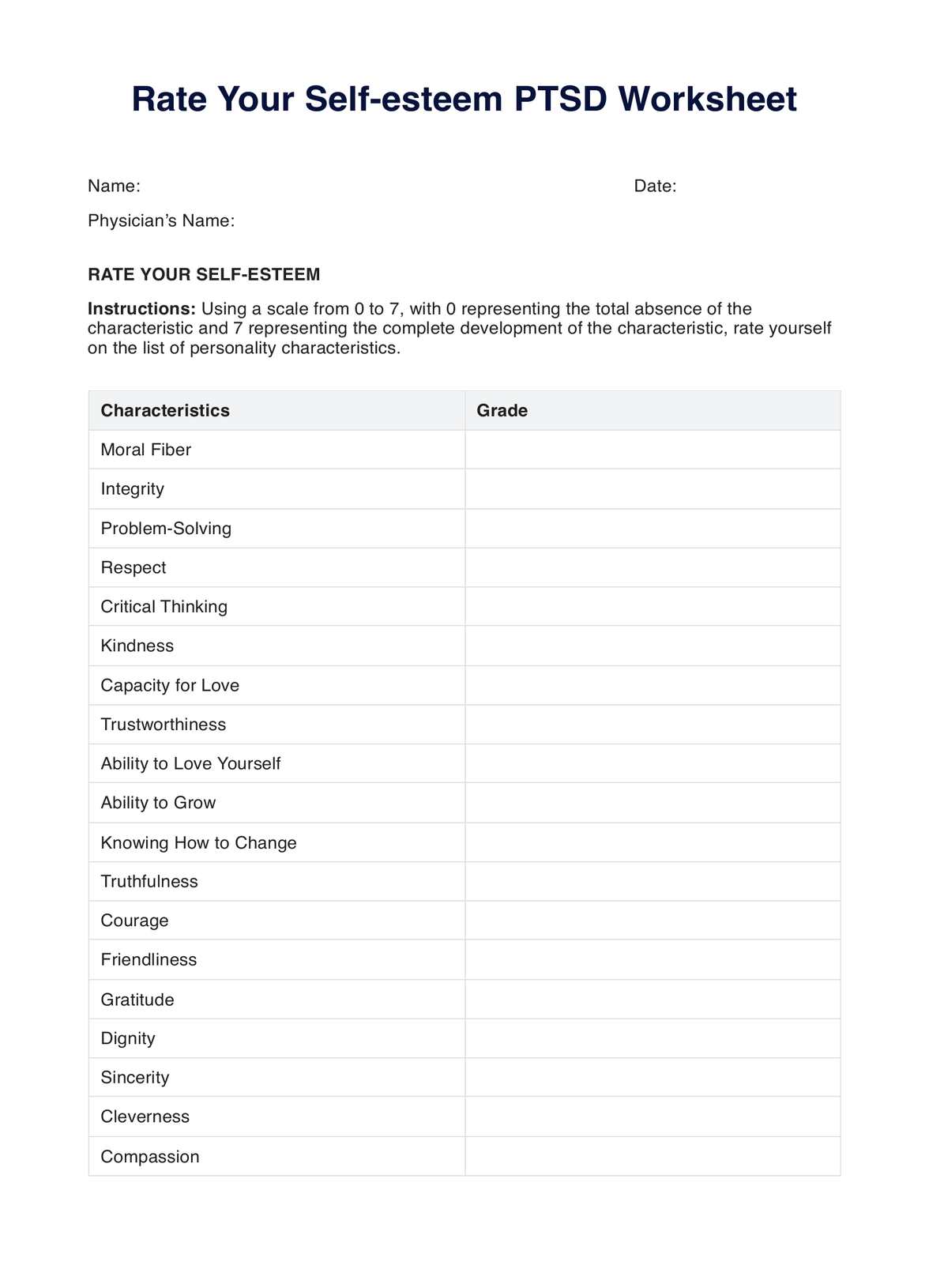
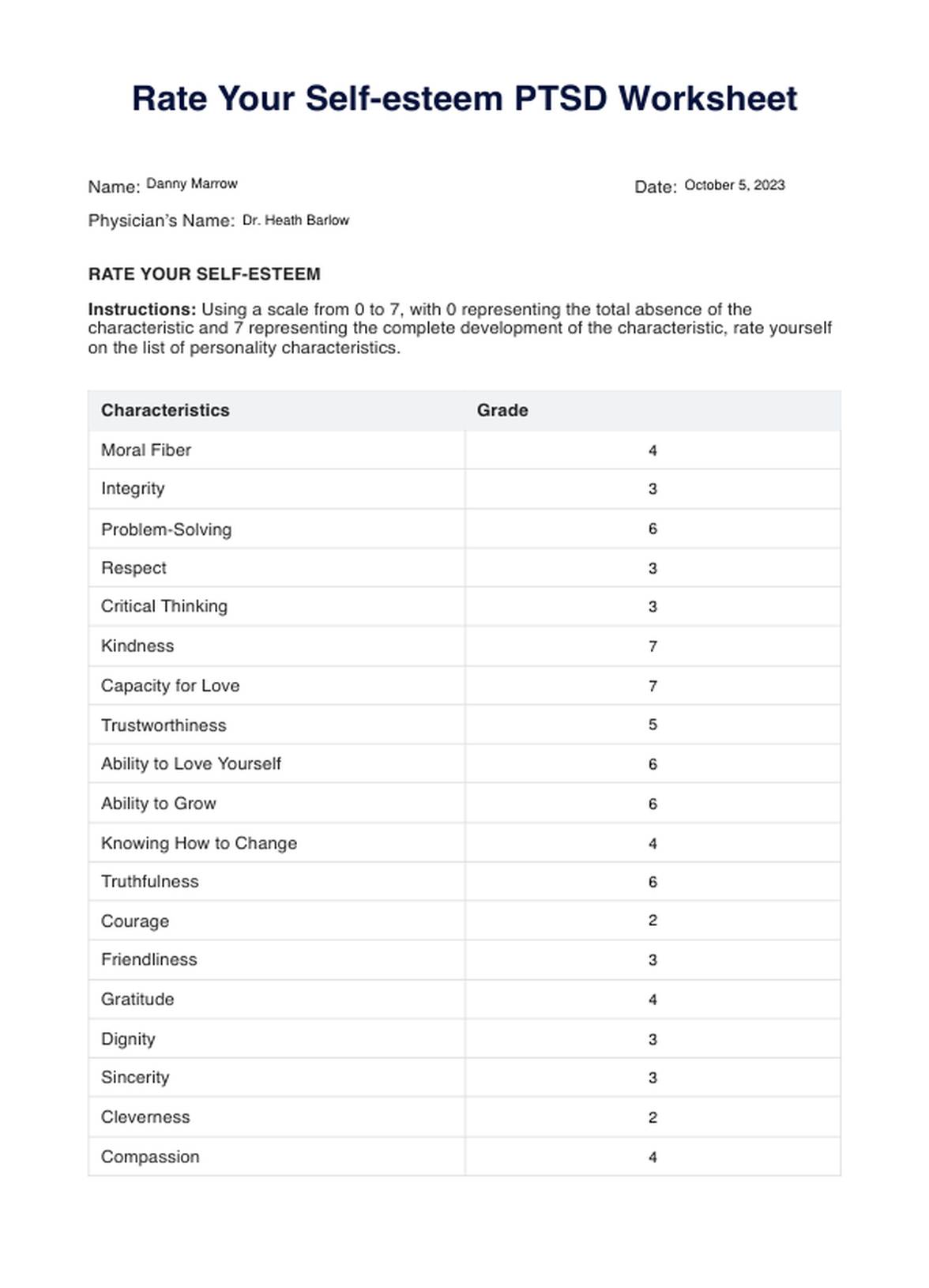

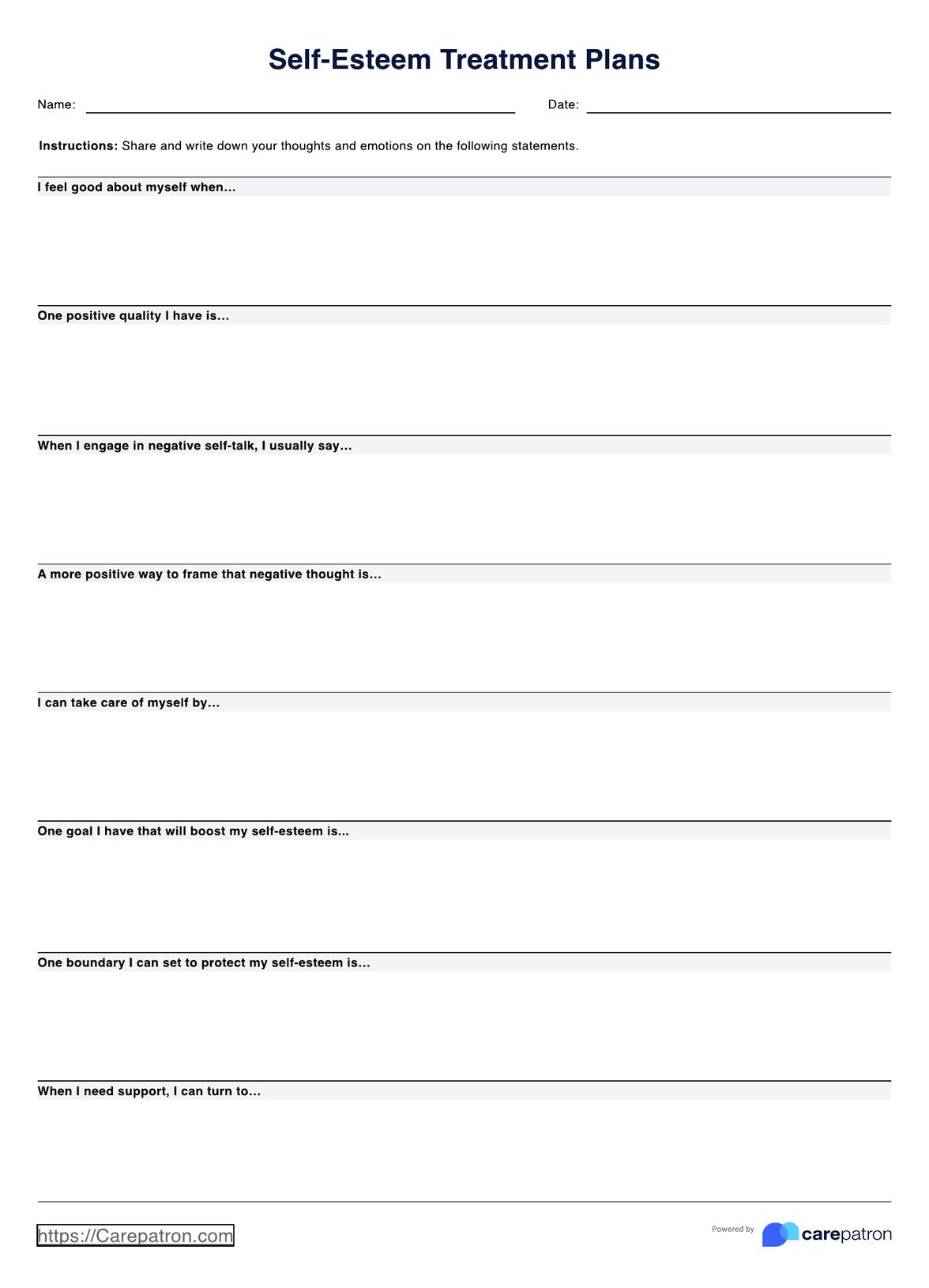
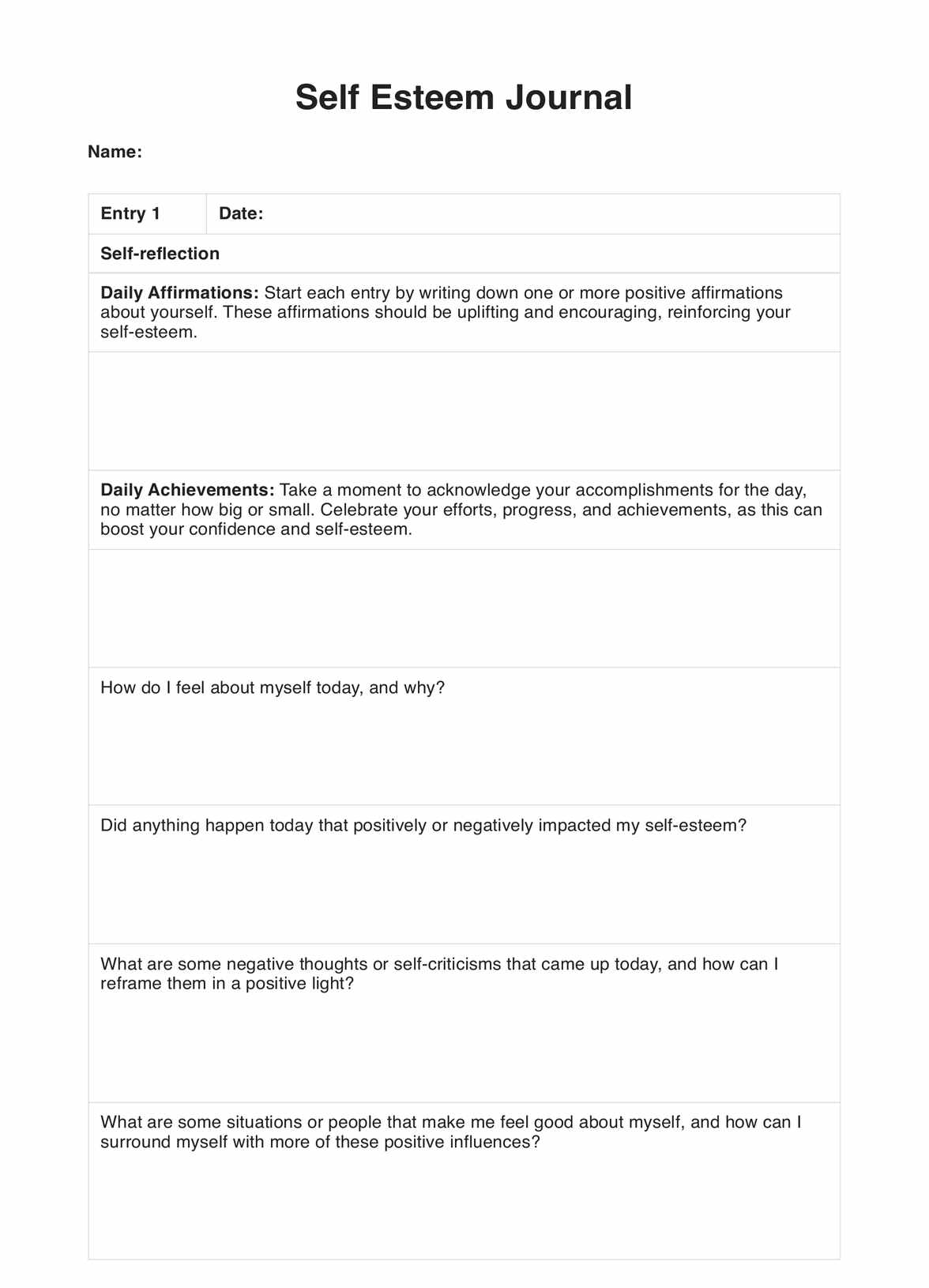
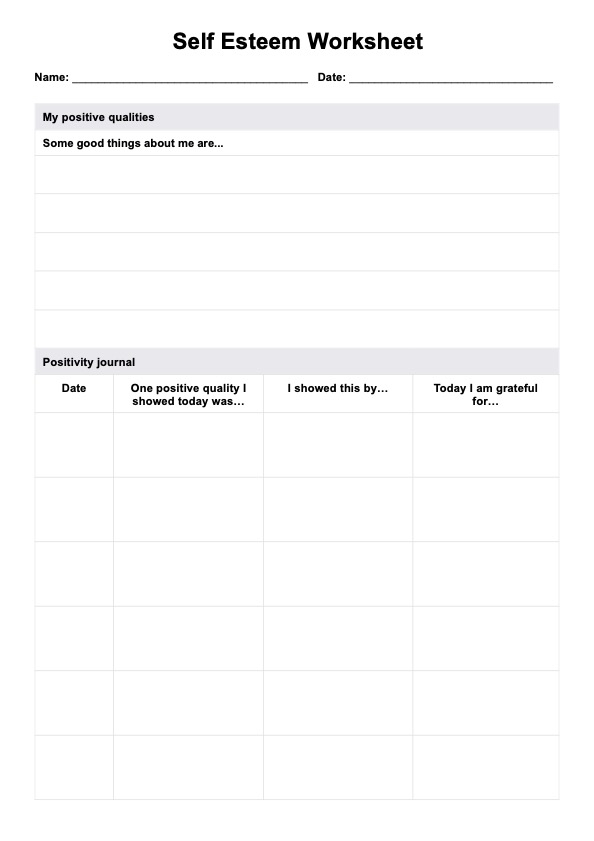
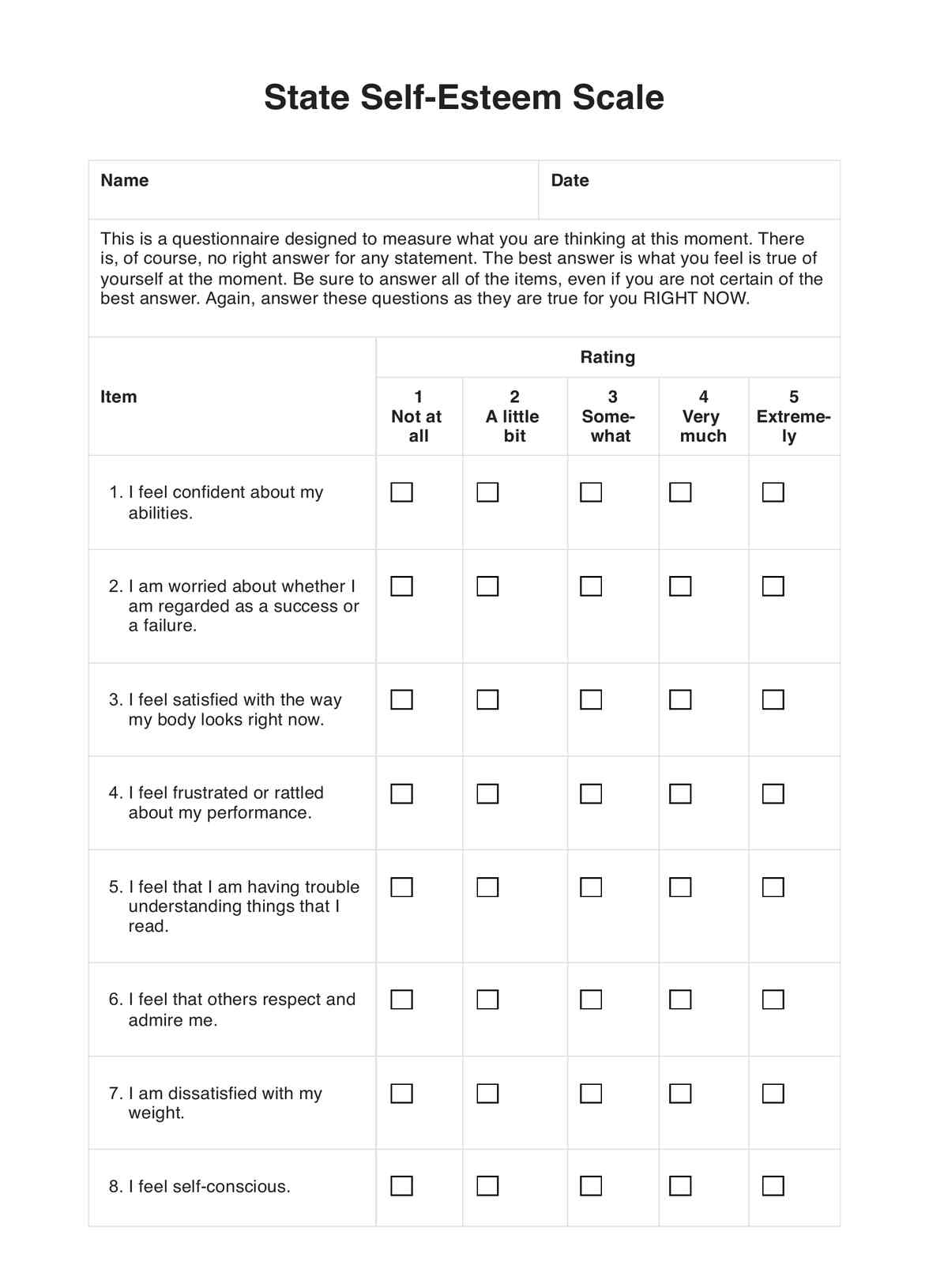
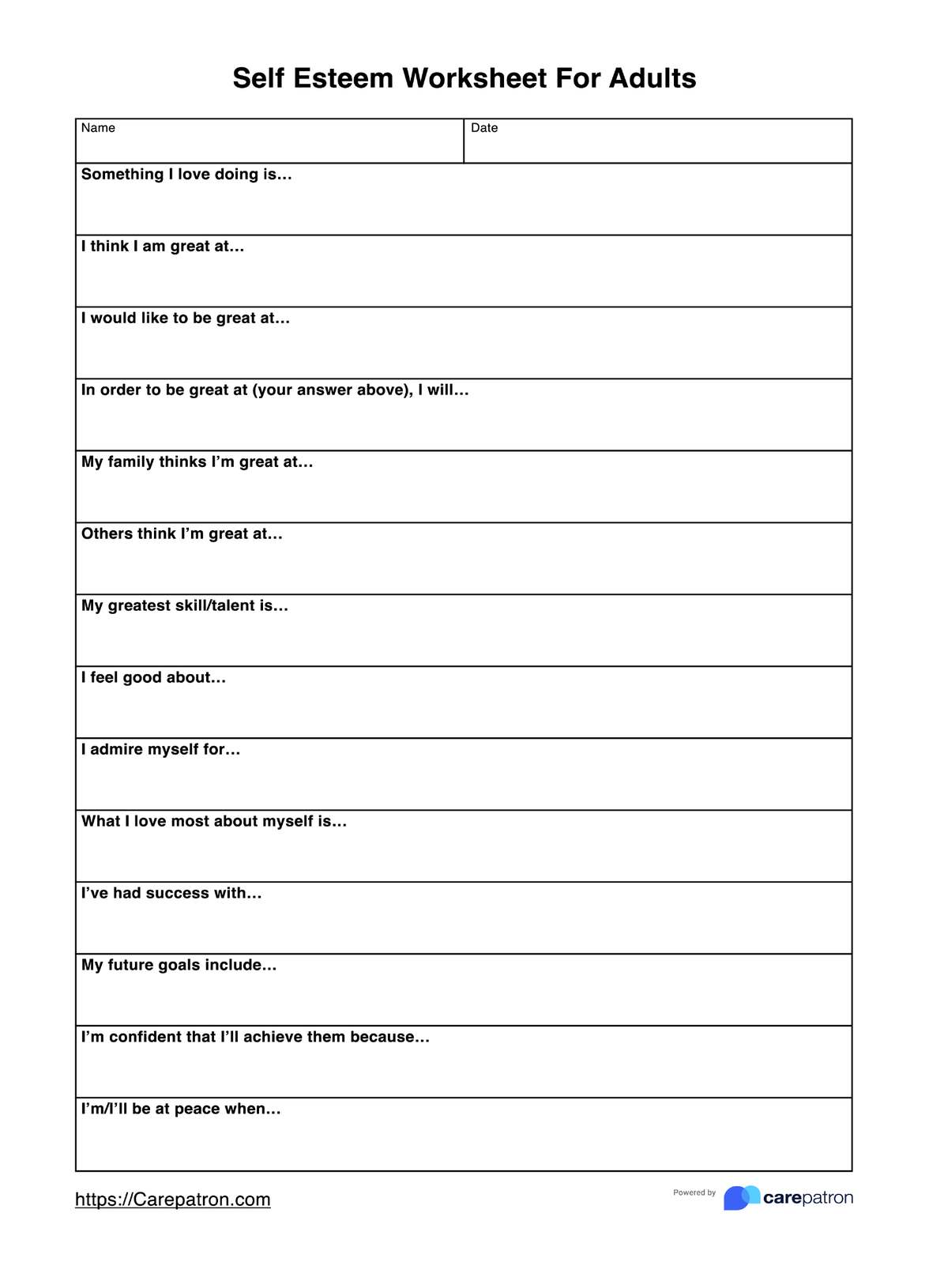















-template.jpg)




















































































